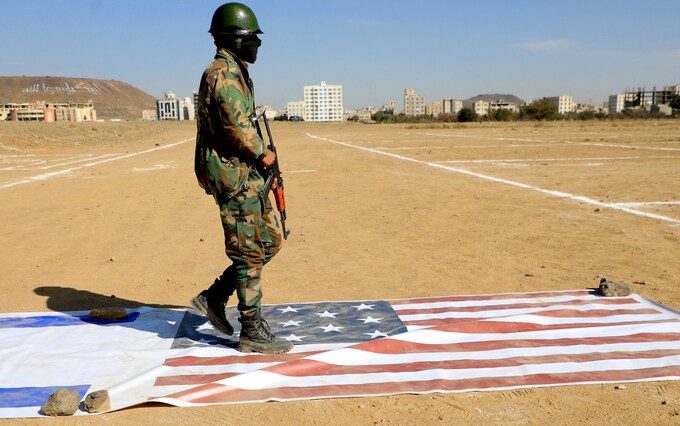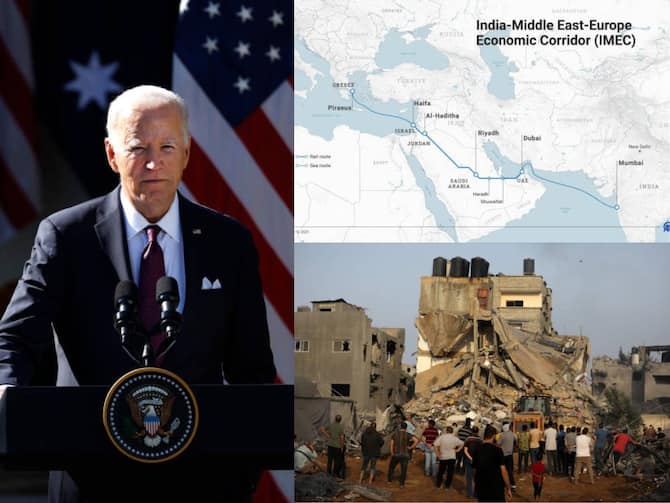The Middle East Pot Boiler, US Retaliatory Strikes Claim 18 Lives Amid Rising Tensions While Iran’s Revolutionary Guards Commander Says He is ‘Not Afraid’ Of War With US
The recent escalation of tensions in the Middle East following retaliatory strikes by the United States in Iraq and Syria has drawn attention to the complex dynamics at play in the region. After a drone attack claimed the lives of three US soldiers in Jordan, President Joe Biden emphasized America's resolve to respond to any harm inflicted upon its citizens. The subsequent airstrikes targeted Iranian-affiliated forces and militia groups, marking a significant development in the ongoing geopolitical tensions between Washington and Tehran.

Tensions are further on the boil in the Middle East after in response to a drone strike that resulted in the deaths of three American soldiers in Jordan, the US military initiated retaliatory airstrikes targeting Iranian-affiliated forces and militia groups supported by Tehran in Iraq and Syria.
Utilizing a mix of drones and long-range B1 bombers stationed in the US, the operation deployed over 125 precision munitions to strike 85 targets across seven facilities—four located in Syria and three in Iraq—demonstrating the strength of the US Air Force.
Reports from the Syrian Observatory for Human Rights indicate that the strikes in eastern Syria have resulted in the deaths of at least 18 individuals associated with Iran-backed groups.
The strikes covered a broad area from Deir ez-Zor to Albu Kamal, near the Iraqi border, and destroyed 26 significant sites housing pro-Iranian factions, including weapon caches.
Charles Lister, a senior fellow at the Middle East Institute, commented on social media platform X, noting that the scale of the strikes in western Iraq and eastern Syria surpasses any previous actions against Iran’s proxies.

Observations of significant secondary explosions on both sides of the border suggest that large rocket and missile depots were targeted.
Despite refraining from direct strikes on Iranian territory in response to the drone attack, the United States attributed responsibility to Iran-backed forces for the incident.
Both Tehran and Washington have been engaged in efforts to prevent a full-scale escalation of conflict.
“Our response began today. It will continue at times and places of our choosing,” US President Joe Biden said in a statement.
The United States does not seek conflict in the Middle East or anywhere else in the world. But let all those who might seek to do us harm know this: If you harm an American, we will respond,” he added.
National Security Council spokesman John Kirby communicated to the journalists that the strikes lasted roughly 30 minutes, though they involved a lengthy trip for the B-1 bombers that took part after flying from the United States.
He stated that the Defense Department is still assessing damage from the strikes, which hit dozens of targets at seven separate facilities, but that the United States believes the raids were successful, and made clear that more would follow.
Following the latest attacks, Iraq’s prime minister, who had called for the departure of international troops after a previous US strike in Baghdad, criticised the latest military action as a violation of its sovereignty.
Kirby said Washington “did inform the Iraqi government prior to the strikes,” but did not elaborate on Baghdad’s private response to that information.
Three soldiers who were killed Sunday were the first US military deaths from hostile fire in the Middle East since the October 7 Hamas surprise attack on Israel that sparked a devastating Israeli assault on Gaza, which has stoked tensions and violence in the region and dragged it ever closer to an all-out conflict.
US and coalition troops have come under attack more than 165 times in Iraq, Syria and Jordan since mid-October with weapons including drones, rockets and short-range ballistic missiles.
Dozens of American personnel were wounded in previous attacks, many of which have been claimed by a loose alliance of Iran-linked armed groups that opposes US support for Israel in the Gaza conflict and wants American troops out of the region.
At the same time, Yemen’s Iran-backed Houthi rebels began targeting international shipping in November, sparking US and British air strikes aimed at reducing their ability to hit commercial vessels.
Among the most elite special forces in the US military, two SEALS were declared dead after being lost at sea during an operation to seize Iranian weapons bound for the Huthis on a ship off the coast of Somalia.

Iran-Backed Terrorists On The Run
Reports suggested that Iran-backed militias in Iraq and Syria are vacating their military posts in anticipation of an American retaliatory strike after the United States vowed to avenge the death of soldiers killed in the deadly drone attack in Jordan, blaming Iran-backed terror groups for the strike.
Media outlets reported that terrorists belonging to the Islamic Resistance in Iraq were abandoning their positions along the Iraq-Syria border, leaving behind a skeletal crew after the US heightened reconnaissance activity.
As per reports, terrorists are so afraid that leaders are fearful of using mobile phones lest they be tracked and hit.
The Conundrum
Iraq’s Islamic Resistance is an umbrella group for Iran-backed terrorists and has been carrying out drone attacks in Syria and Palestine and has claimed responsibility for several attacks on US bases in Iraq and Syria since the Israel-Hamas war began.
The Times of Israel report claimed that three officials with Iran-backed militias in Iraq averred that the drone attack in Jordan had been carried out by one of the Iraqi groups, though no faction has yet claimed credit.
Meanwhile, Maj Gen Hossein Salami, the head of Iran’s Islamic Revolutionary Guards, has accentuated Iran’s lack of fear regarding potential conflict with the United States.
The statement comes even as the Pentagon is considering its response to the recent drone attack in Jordan that resulted in the deaths of three US military personnel.
Salami conveyed, “We do not leave any threat unanswered, and we do not seek war, but we are not afraid of it. This is the well-known truth.”
Following the drone attack, it is expected that other Iran-backed militias in Iraq may follow the lead of Kataib Hezbollah, the group responsible for the fatal incident, by suspending operations against US bases.
Kataib Hezbollah’s decision seems to be impacted by pressure from Iran to de-escalate the situation.
UK Defense Secretary Grant Shapps, amidst these developments, has flown to Washington for crisis talks and possibly exploring options such as the potential deployment of a British aircraft carrier to the Red Sea.
The move could act as a substitute for the USS Dwight D Eisenhower, which is concluding its tour of duty.
While Kataib Hezbollah declared a temporary suspension of attacks on American forces in the Middle East, Houthi forces have continued firing missiles at US naval ships in the Red Sea,
The group has stressed its independent decision-making but suggested a potential coordination with other Iran-backed militias.
As political pressure mounts, Iraq’s Prime Minister Mohammed Shia al-Sudani urges militias to cease attacks on US bases, potentially alleviating pressure on President Joe Biden to engage with Iran directly.
CIA Director William Burns states the conflict’s root cause to be Iran, stating, “Key to Israel’s – and the region’s – security is dealing with Iran.” Burns highlights Iran’s emboldenment and readiness to support regional proxies amid expanding nuclear activities and enabling Russian aggression.
The US has pledged a “very consequential” response to the attacks, with indications that the IRGC and Hezbollah back the groups responsible. Meanwhile, Yemen’s Houthi group vows to continue attacks on US and British warships in the Red Sea, raising concerns about potential disruptions to world trade.
Given the rising complexities, the UK is exploring cooperation with the US and the potential deployment of aircraft carriers to the Red Sea.
At the same time, a separate EU naval mission aims to protect shipping in the Red Sea, with discussions about command responsibilities ongoing among EU defence ministers.




